Abstract
The results of studies in a patient with congenital deficiency of Factor XI who developed an inhibitor are presented. The patient presented with a severe, apparently spontaneous bleed into the thigh, which progressed despite infusion of fresh frozen plasma, but which responded promptly to activated prothrombin complex. During therapy with plasma his clotting time and Factor XI level were unresponsive and a Factor XI inhibitor titer of 6,000 U/ml was attained. The inhibitor was isolated and found to be polyclonal immunoglobulin G (IgG), predominantly of subclass 4. The specificity of the antibodies for Factor XI was shown by the ability of isolated inhibitor bound to polyacrylamide beads to remove Factor XI selectively from normal plasma. The binding of 125I-labeled factor XI to the inhibitor was studied and an affinity constant of 1.65 × 1010 liter/mol was found. Complexing of the antibodies with Factor XI was shown to block multiple activities of the clotting factor. Factor XI complexed with antibody did not bind to high molecular weight kininogen or undergo activation and cleavage by two-chain Factor XII. The complex of activated Factor XI with inhibitor prevented the cleavage and activation of Factor IX. Hence the inhibitor appears to act by binding to multiple sites on the Factor XI molecule and preventing its interaction with other molecules. Clinically these interactions of the inhibitor with Factor XI result in a state of severe Factor XI deficiency.
The clinical circumstances of the case, with severe hemorrhage refractory to plasma infusion but readily responsive to an alternate clot-promoting agent, suggest that a defect of intrinsic system activation was critical, supporting the inference that Factor XI does participate in normal hemostasis. The clinical course of this patient, who has only had two documented hemorrhages in the presence of the inhibitor, is not as severe as that of patients with severe Factor VIII or IX deficiency. This suggests that physiologic activation of Factors XI and IX does not occur exclusively in series because deficiency of factors XII, XI, VIII, and IX should then have similar hemostatic consequences. We propose that independent mechanisms for bypass of Factors XII and XI are important in physiologic activation of coagulation.
Full text
PDF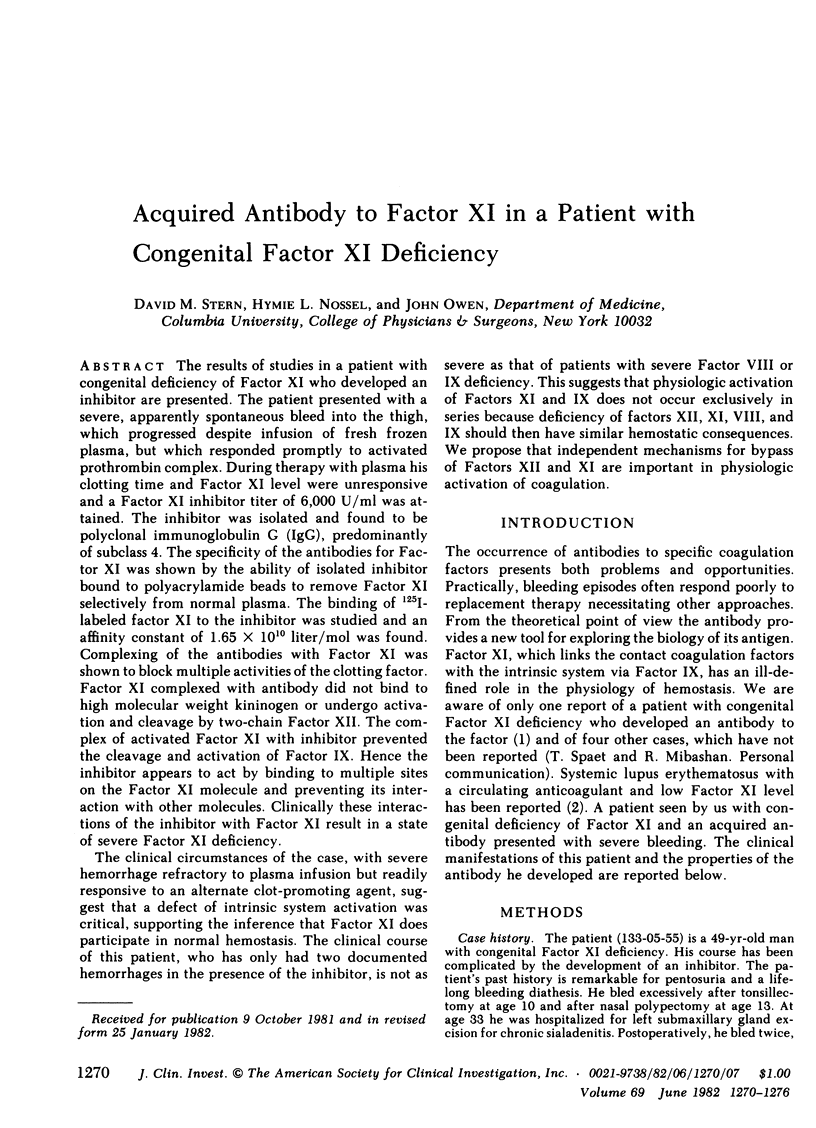
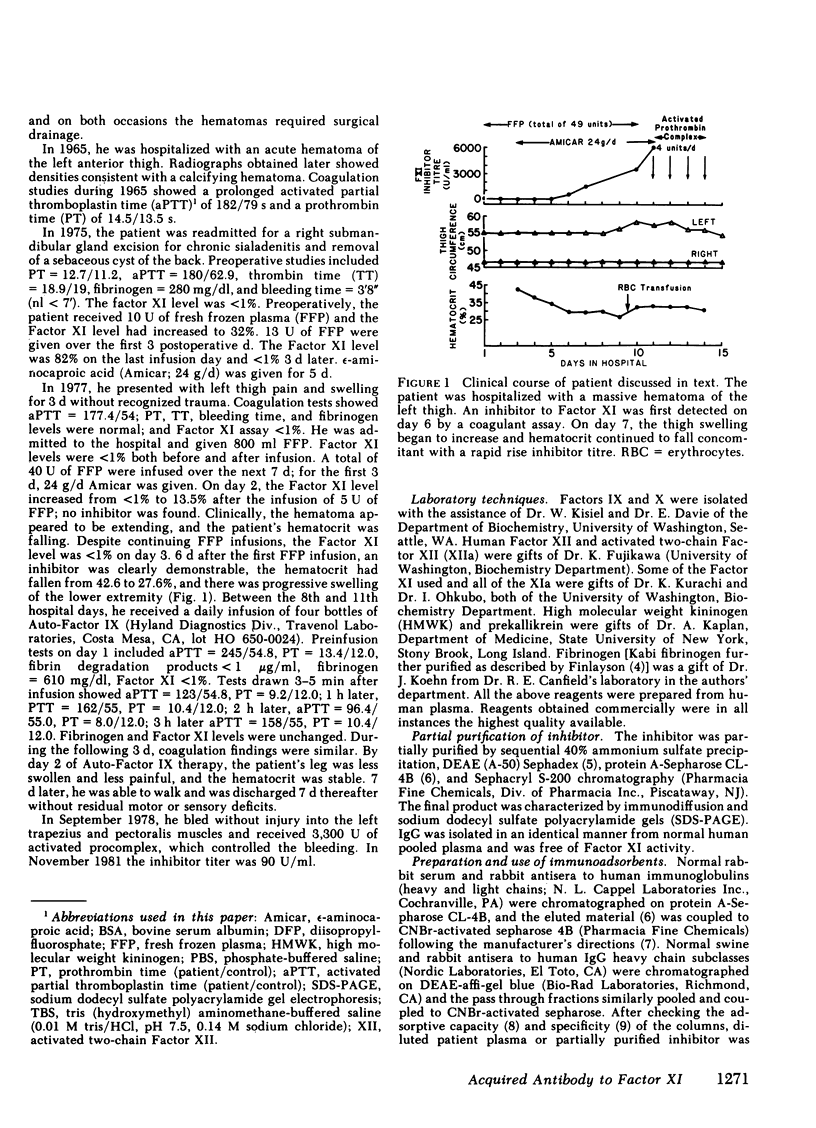
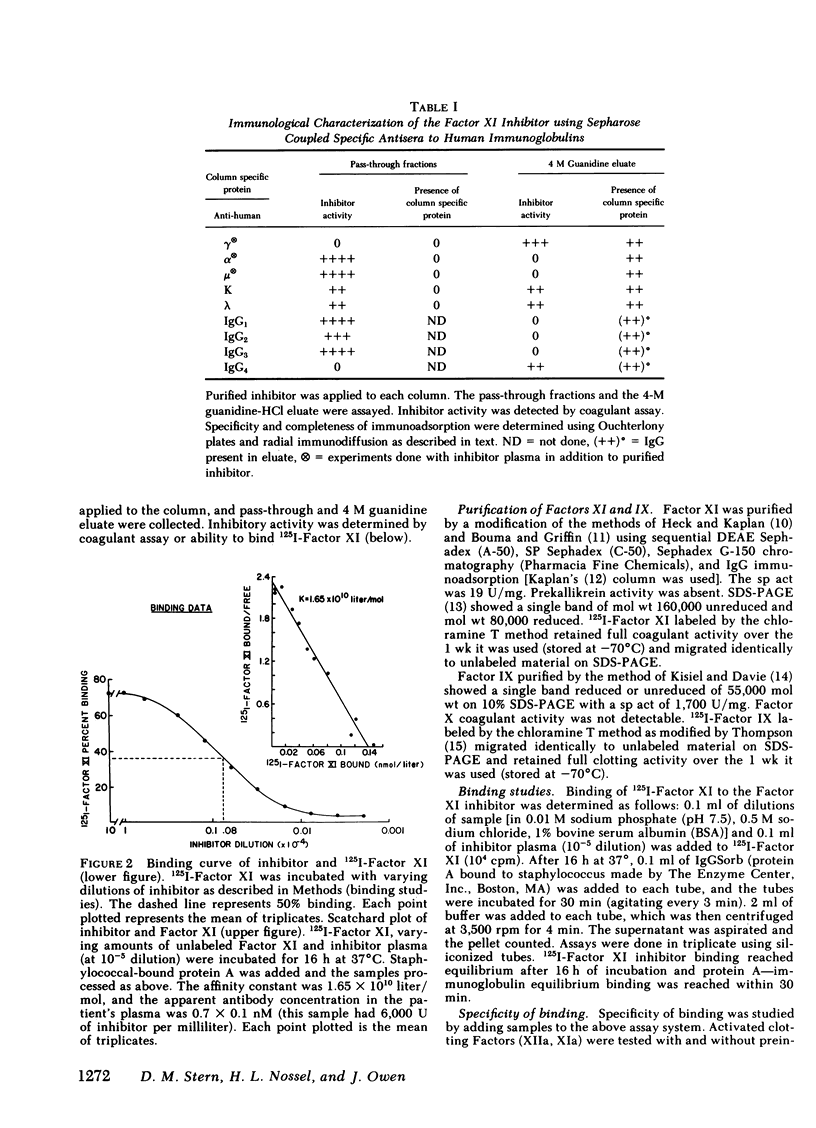
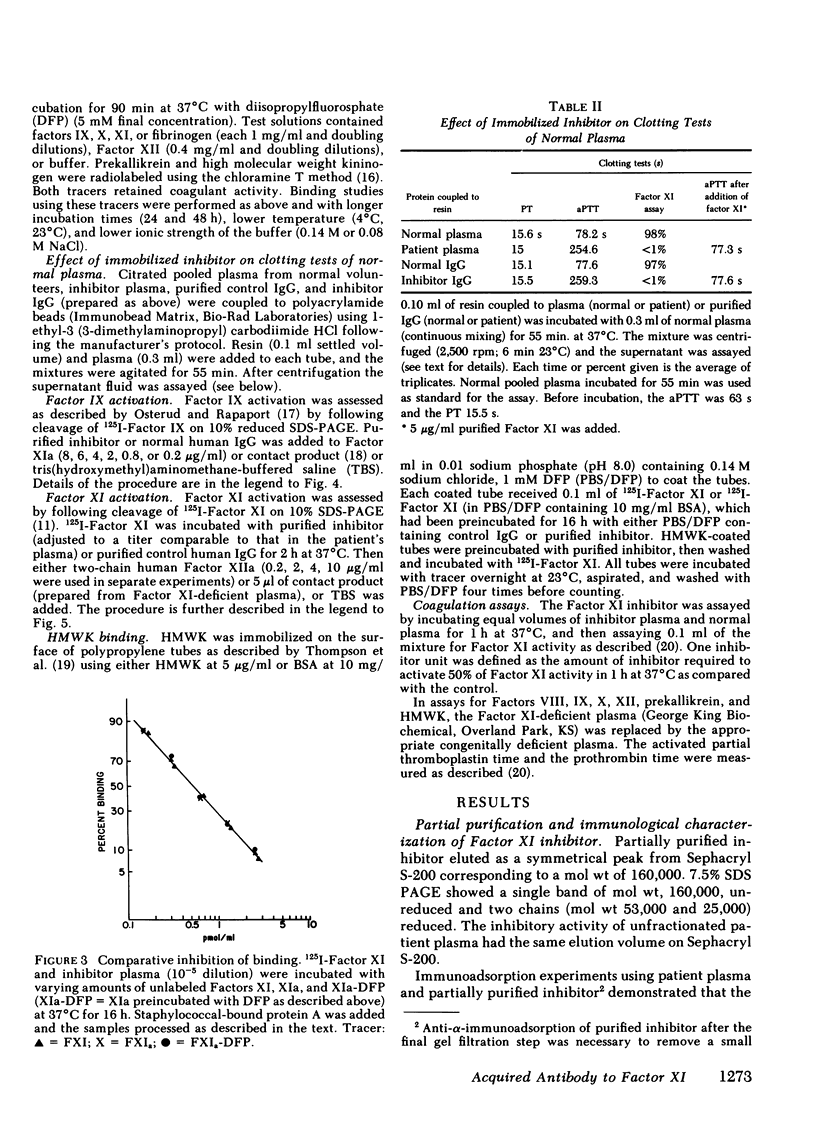
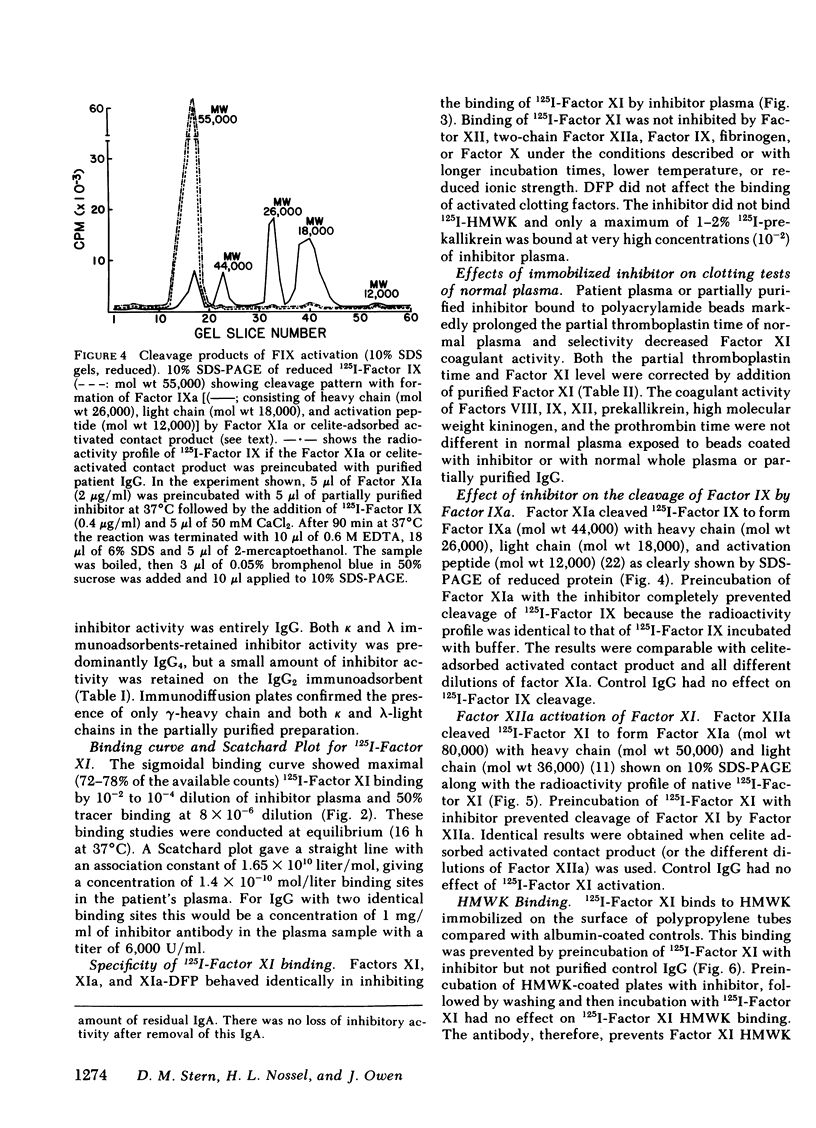
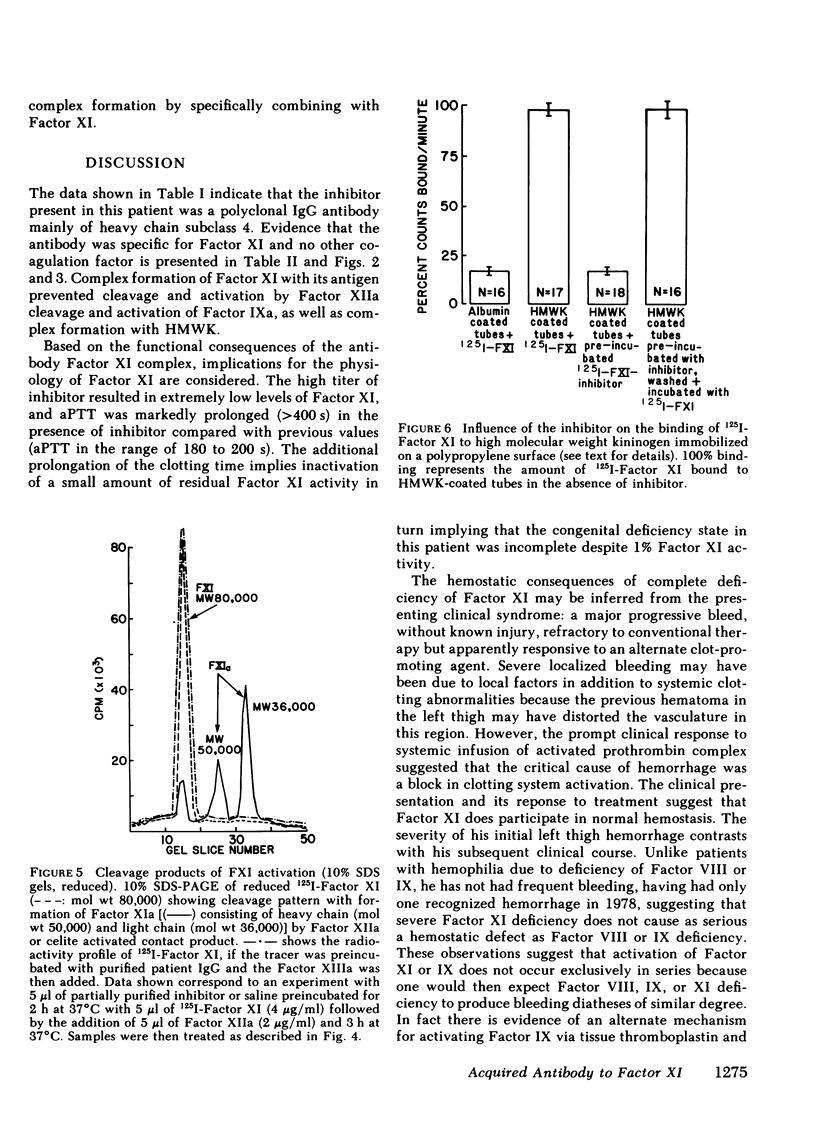
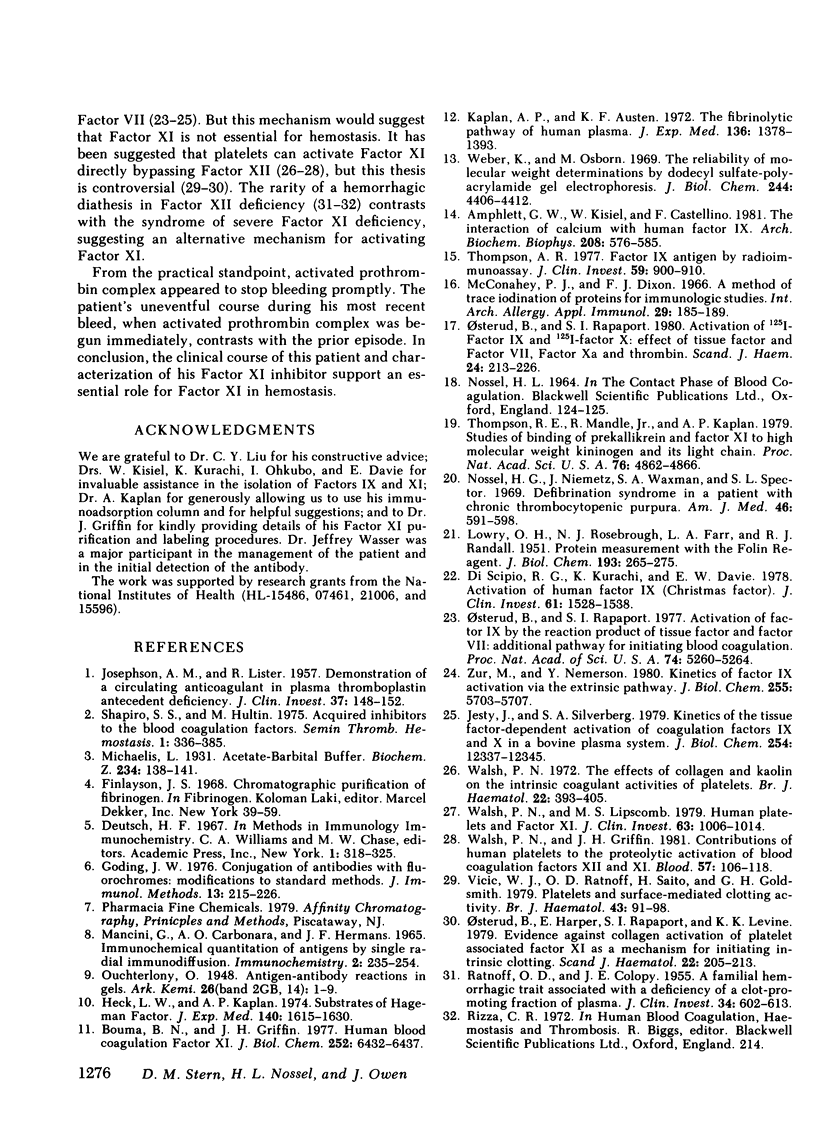
Selected References
These references are in PubMed. This may not be the complete list of references from this article.
- Amphlett G. W., Kisiel W., Castellino F. J. The interaction of Ca2+ with human Factor IX. Arch Biochem Biophys. 1981 May;208(2):576–585. doi: 10.1016/0003-9861(81)90546-4. [DOI] [PubMed] [Google Scholar]
- Bouma B. N., Griffin J. H. Human blood coagulation factor XI. Purification, properties, and mechanism of activation by activated factor XII. J Biol Chem. 1977 Sep 25;252(18):6432–6437. [PubMed] [Google Scholar]
- Di Scipio R. G., Kurachi K., Davie E. W. Activation of human factor IX (Christmas factor). J Clin Invest. 1978 Jun;61(6):1528–1538. doi: 10.1172/JCI109073. [DOI] [PMC free article] [PubMed] [Google Scholar]
- Goding J. W. Conjugation of antibodies with fluorochromes: modifications to the standard methods. J Immunol Methods. 1976;13(3-4):215–226. doi: 10.1016/0022-1759(76)90068-5. [DOI] [PubMed] [Google Scholar]
- Heck L. W., Kaplan A. P. Substrates of Hageman factor. I. Isolation and characterization of human factor XI (PTA) and inhibition of the activated enzyme by alpha 1-antitrypsin. J Exp Med. 1974 Dec 1;140(6):1615–1630. doi: 10.1084/jem.140.6.1615. [DOI] [PMC free article] [PubMed] [Google Scholar]
- JOSEPHSON A. M., LISKER R. Demonstration of a circulating anticoagulant in plasma thromboplastin antecedent deficiency. J Clin Invest. 1958 Feb;37(2):148–152. doi: 10.1172/JCI103592. [DOI] [PMC free article] [PubMed] [Google Scholar]
- Jesty J., Silverberg S. A. Kinetics of the tissue factor-dependent activation of coagulation Factors IX and X in a bovine plasma system. J Biol Chem. 1979 Dec 25;254(24):12337–12345. [PubMed] [Google Scholar]
- Kaplan A. P., Austen K. F. The fibrinolytic pathway of human plasma. Isolation and characterization of the plasminogen proactivator. J Exp Med. 1972 Dec 1;136(6):1378–1393. doi: 10.1084/jem.136.6.1378. [DOI] [PMC free article] [PubMed] [Google Scholar]
- LOWRY O. H., ROSEBROUGH N. J., FARR A. L., RANDALL R. J. Protein measurement with the Folin phenol reagent. J Biol Chem. 1951 Nov;193(1):265–275. [PubMed] [Google Scholar]
- Lipscomb M. S., Walsh P. N. Human platelets and factor XI. Localization in platelet membranes of factor XI-like activity and its functional distinction from plasma factor XI. J Clin Invest. 1979 May;63(5):1006–1014. doi: 10.1172/JCI109368. [DOI] [PMC free article] [PubMed] [Google Scholar]
- Mancini G., Carbonara A. O., Heremans J. F. Immunochemical quantitation of antigens by single radial immunodiffusion. Immunochemistry. 1965 Sep;2(3):235–254. doi: 10.1016/0019-2791(65)90004-2. [DOI] [PubMed] [Google Scholar]
- McConahey P. J., Dixon F. J. A method of trace iodination of proteins for immunologic studies. Int Arch Allergy Appl Immunol. 1966;29(2):185–189. doi: 10.1159/000229699. [DOI] [PubMed] [Google Scholar]
- Nossel H. L., Niemetz J., Waxman S. A., Spector S. L. Defibrination syndrome in a patient with chronic thrombocytopenic purpura. Am J Med. 1969 Apr;46(4):591–598. doi: 10.1016/0002-9343(69)90077-1. [DOI] [PubMed] [Google Scholar]
- Osterud B., Harper E., Rapaport S. I., Lavine K. K. Evidence against collagen activation of platelet-associated factor XI as a mechanism for initiating intrinsic clotting. Scand J Haematol. 1979 Mar;22(3):205–213. doi: 10.1111/j.1600-0609.1979.tb02798.x. [DOI] [PubMed] [Google Scholar]
- Osterud B., Rapaport S. I. Activation of 125I-factor IX and 125I-factor X: effect of tissue factor and factor VII, factor Xa and thrombin. Scand J Haematol. 1980 Mar;24(3):213–226. doi: 10.1111/j.1600-0609.1980.tb01329.x. [DOI] [PubMed] [Google Scholar]
- Osterud B., Rapaport S. I. Activation of factor IX by the reaction product of tissue factor and factor VII: additional pathway for initiating blood coagulation. Proc Natl Acad Sci U S A. 1977 Dec;74(12):5260–5264. doi: 10.1073/pnas.74.12.5260. [DOI] [PMC free article] [PubMed] [Google Scholar]
- RATNOFF O. D., COLOPY J. E. A familial hemorrhagic trait associated with a deficiency of a clot-promoting fraction of plasma. J Clin Invest. 1955 Apr;34(4):602–613. doi: 10.1172/JCI103109. [DOI] [PMC free article] [PubMed] [Google Scholar]
- Thompson A. R. Factor IX antigen by radioimmunoassay. Abnormal factor IX protein in patients on warfarin therapy and with hemophilia B. J Clin Invest. 1977 May;59(5):900–910. doi: 10.1172/JCI108712. [DOI] [PMC free article] [PubMed] [Google Scholar]
- Thompson R. E., Mandle R., Jr, Kaplan A. P. Studies of binding of prekallikrein and Factor XI to high molecular weight kininogen and its light chain. Proc Natl Acad Sci U S A. 1979 Oct;76(10):4862–4866. doi: 10.1073/pnas.76.10.4862. [DOI] [PMC free article] [PubMed] [Google Scholar]
- Vicic W. J., Ratnoff O. D., Saito H., Goldsmith G. H. Platelets and surface-mediated clotting activity. Br J Haematol. 1979 Sep;43(1):91–98. doi: 10.1111/j.1365-2141.1979.tb03724.x. [DOI] [PubMed] [Google Scholar]
- Walsh P. N., Griffin J. H. Contributions of human platelets to the proteolytic activation of blood coagulation factors XII and XI. Blood. 1981 Jan;57(1):106–118. [PubMed] [Google Scholar]
- Walsh P. N. The effects of collagen and kaolin on the intrinsic coagulant activity of platelets. Evidence for an alternative pathway in intrinsic coagulation not requiring factor XII. Br J Haematol. 1972 Apr;22(4):393–405. doi: 10.1111/j.1365-2141.1972.tb05687.x. [DOI] [PubMed] [Google Scholar]
- Weber K., Osborn M. The reliability of molecular weight determinations by dodecyl sulfate-polyacrylamide gel electrophoresis. J Biol Chem. 1969 Aug 25;244(16):4406–4412. [PubMed] [Google Scholar]
- Zur M., Nemerson Y. Kinetics of factor IX activation via the extrinsic pathway. Dependence of Km on tissue factor. J Biol Chem. 1980 Jun 25;255(12):5703–5707. [PubMed] [Google Scholar]


